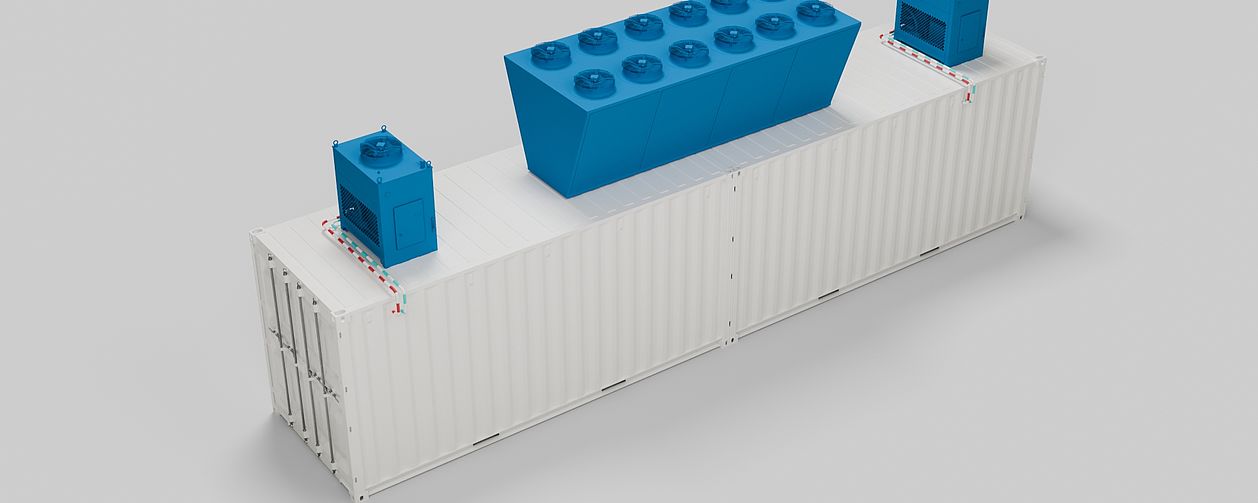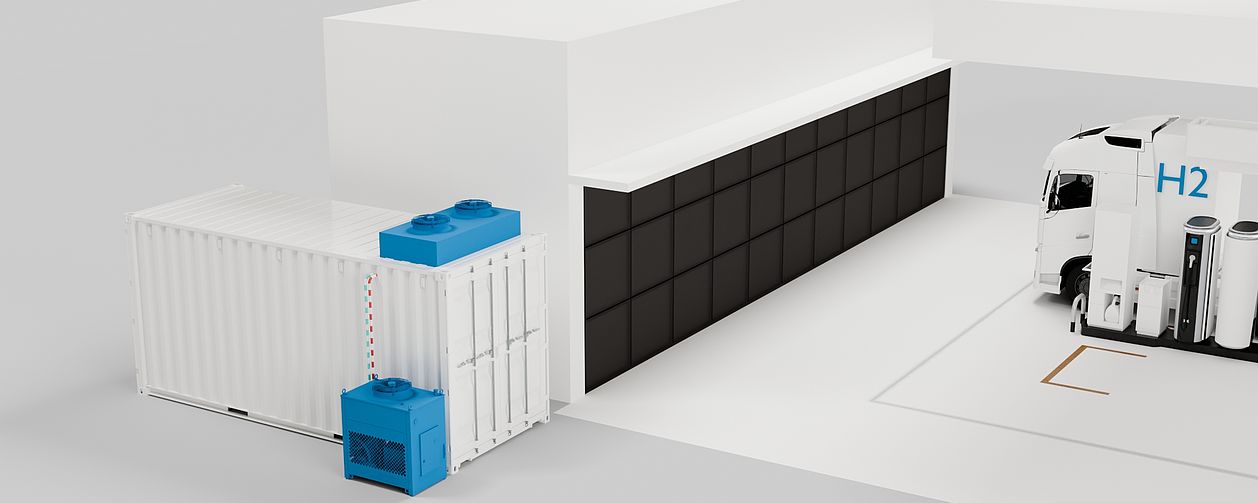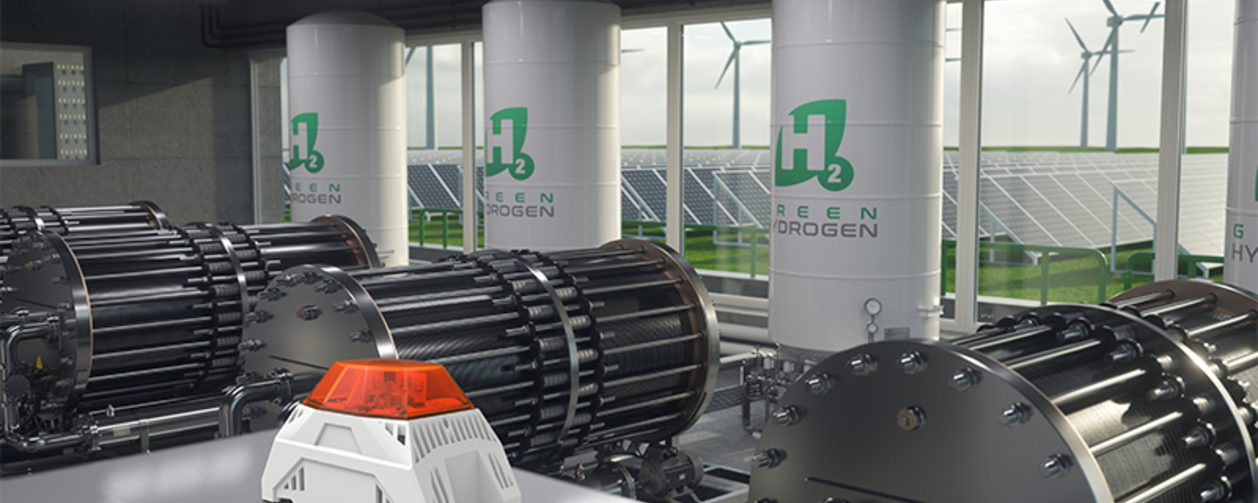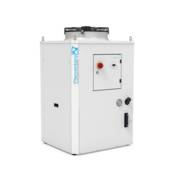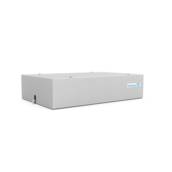Hydrogen As A Sustainable Energy Resource
Green hydrogen is becoming a key component in bringing about energy transition and ensuring a sustainable future. We at Pfannenberg have moved early to embrace this new technology and support it through the design of thermal management and
signaling solutions that extend its life and effectiveness.
We are at your complete disposal to study solutions for different types of applications together.
Please contact us!
Energy conversion and hydrogen processing
Green hydrogen electrolysis involves splitting water molecules into hydrogen and oxygen using a clean energy source. The process comprises several critical stages, each requiring precise temperature control to ensure optimal performance and longevity.
- Rectifier: It manages the power supply to the electrolyser, ensuring consistent electrical input. The electrical components involved generate significant heat during operation. Effective cooling is essential to prevent overheating and maintain efficiency. Cooling methods very oftern include a chiller system or a dry cooler.
- Hydrogen Stacks: These are the core of the electrolyser, where the electrochemical reactions occur to produce hydrogen and oxygen gases. The process releases heat that must be dissipated to maintain a stable operating temperature. Typically, a dry cooler removes the excess heat and cools the fluid before it recirculates.
- Gas Purification: Following production, hydrogen undergoes purification to remove contaminants such as moisture, oxygen, nitrogen, and residual gases—ensuring it meets the required purity levels for industrial or mobility applications. These purification processes often release significant heat. At this stage, an additional chiller is typically required to manage the thermal load and maintain optimal operating conditions.
Hydrogen Fuelling Stations
Hydrogen fuelling involves energy-intensive steps—compression, pre-cooling, storage, and dispensing—each generating heat and requiring efficient thermal management to maintain performance, safety, and compliance.
- Hydrogen Compression: Hydrogen must be compressed to high pressures (typically 350–700 bar) for storage and dispensing. Industrial chillers and air/water heat exchangers are commonly used to stabilize compressor temperature.
- Pre-Cooling Before Dispensing: To ensure fast, safe refuelling and meet protocols like SAE J2601, hydrogen must be cooled before entering the vehicle. This pre-cooling prevents overheating and enables refuelling in under five minutes, even at high pressures—typically using compact refrigeration systems or chillers integrated with the dispenser.
- Storage Systems: High-pressure storage tanks within the station also require temperature control to avoid pressure fluctuations caused by ambient heat or gas compression. Passive or active cooling can be applied depending on the installation size and geographic location.
- Electronic Control Systems: The fueling station’s control panels, power electronics, and monitoring equipment need protection from temperature-related degradation or failure, often via filter fans or cooling units or an air/water heat exchanger + chiller combination .
Depending on environmental conditions and station throughput, both air- and liquid-based cooling systems may be deployed to meet operational demands.
Alarm Systems
The primary purpose of alarm systems in hydrogen plants is to alert operators to abnormal conditions or hazards that could pose a threat to personnel, equipment, or the environment.
These visual or audible alarms may be triggered by a variety of factors, including changes in temperature, pressure, flow rates, or chemical concentrations, i.e.:
•High-pressure alarms: triggered when the pressure in a vessel or piping system exceeds a predetermined threshold.
•Temperature alarms: triggered when the temperature of a vessel or piping system exceeds a predetermined threshold.
•Gas detection alarms: triggered when the concentration of a specific gas exceeds a predetermined threshold.
•Flow rate alarms: triggered when the flow rate of a gas or liquid falls below or exceeds a predetermined threshold.
Our visual and audible signaling portfolio includes SIL/PL-compliant signaling devices as well as Ex signaling solutions to ensure that prompt action is taken to prevent accidents or equipment damage.
Brochures
| 描述 | 語言 | 类型 | 大小 | 下载 |
|---|---|---|---|---|
OPTIMAL COOLING FOR HYDROGEN SYSTEMS |
|
960 KB | 下载 |
